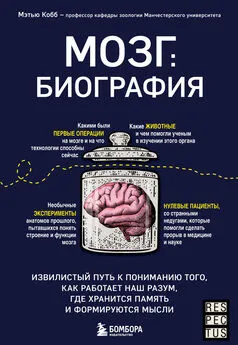Барбара Тверски - Ум в движении [Как действие формирует мысль] [litres]
- Название:Ум в движении [Как действие формирует мысль] [litres]
- Автор:
- Жанр:
- Издательство:Литагент Альпина
- Год:2020
- Город:Москва
- ISBN:978-5-0013-9354-2
- Рейтинг:
- Избранное:Добавить в избранное
-
Отзывы:
-
Ваша оценка:
Барбара Тверски - Ум в движении [Как действие формирует мысль] [litres] краткое содержание
Книга известного когнитивного психолога Барбары Тверски посвящена пространственному мышлению. Это мышление включает в себя конструирование «в голове» и работу с образами в отношении не только физического пространства, но и других его видов – пространств социального взаимодействия и коммуникации, жестов, речи, рисунков, схем и карт, абстрактных построений и бесконечного поля креативности. Ключевая идея книги как раз и состоит в том, что пространственное мышление является базовым, оно лежит в основе всех сфер нашей деятельности и всех ситуаций, в которые мы вовлекаемся.
Доступное и насыщенное юмором изложение серьезного, для многих абсолютно нового материала, а также прекрасные иллюстрации привлекут внимание самых взыскательных читателей. Они найдут в книге как увлекательную конкретную информацию о работе и развитии пространственного мышления, так и важные обобщения высокого уровня, воплощенные в девять законов когниции.
Ум в движении [Как действие формирует мысль] [litres] - читать онлайн бесплатно ознакомительный отрывок
Интервал:
Закладка:
Tversky, B., & Hard, B. M. (2009). Embodied and disembodied cognition: Spatial perspective-taking. Cognition , 110(1), 124–129.
Древнейшие (на сегодня) карты
Clarke, K. C. (2013). What is the world’s oldest map? Cartographic Journal , 50(2), 136–143.
Utrilla, P., Mazo, C., Sopena, M. C., Martínez-Bea, M., & Domingo, R. (2009). A paleolithic map from 13,660 calBP: engraved stone blocks from the Late Magdalenian in Abauntz Cave (Navarra, Spain). Journal of Human Evolution , 57(2), 99–111.
Клетки места и клетки решетки
Fyhn, M., Molden, S., Witter, M. P., Moser, E. I., & Moser, M. B. (2004). Spatial representation in the entorhinal cortex. Science , 305, 1258–1264.
Moser, E. I., Kropff, E., & Moser, M. B. (2008). Place cells, grid cells, and the brain’s spatial representation system. Annual Review of Neuroscience , 31.
O’Keefe, J. (1976). Place units in the hippocampus of the freely moving rat. Experimental Neurology , 51, 78–109.
O’Keefe, J., & Nadel, L. (1978). The hippocampus as a cognitive map . Oxford, England: Clarendon Press.
Аллоцентрическое кодирование пространства (даже младенцами)
Burgess, N. (2006). Spatial memory: How egocentric and allocentric combine. Trends in Cognitive Science , 10(12), 551–557.
Doeller, C. F., Barry, C., & Burgess, N. (2010). Evidence for grid cells in a human memory network. Nature , 463(7281), 657–661.
Ekstrom A., Kahana M. J., Caplan, J. B., Fields, T. A., Isham, E. A., Newman, E. L., & Fried, I. (2003). Cellular networks underlying human spatial navigation. Nature , 425, 184–188.
Jacobs, J., Weidemann, C. T., Miller, J. F., Solway, A., Burke, J. F., Wei, X. X., Suthana, N., … Kahan, M. J. (2013). Direct recordings of grid-like neuronal activity in human spatial navigation. Nature Neuroscience , 16, 1188–1190.
Kaufman, J., & Needham, A. (1999). Objective spatial coding by 6.5-monthold infants in a visual dishabituation task. Developmental Science , 2(4), 432–441.
Мозговые субстраты навигации
Epstein, R. A., Patai, E. Z., Julian, J. B., & Spiers, H. J. (2017). The cognitive map in humans: Spatial navigation and beyond. Nature Neuroscience , 20(11), 1504.
Marchette, S. A., Ryan, J., & Epstein, R. A. (2017). Schematic representations of local environmental space guide goal-directed navigation. Cognition , 158, 68–80.
Тестирование лондонских таксистов
Knowledge Taxi. (n. d.). London knowledge. Взято с сайта https://www.theknowledgetaxi.co.uk/.
Увеличение гиппокампа у лондонских таксистов
Maguire, E. A., Gadian, D. G., Johnsrude, I. S., Good, C. D., Ashburner, J., Frackowiak, R. S., & Frith, C. D. (2000). Navigation-related structural change in the hippocampi of taxi drivers. Proceedings of the National Academy of Sciences , 97(8), 4398–4403.
Использование нейронов для новых функций
Anderson, M. L. (2010). Neural reuse: A fundamental organizational principle of the brain. Behavioral and Brain Sciences , 33(4), 245–266.
Роль гиппокампа в событийной памяти
Eichenbaum, H., & Cohen, N. J. (2014). Can we reconcile the declarative memory and spatial navigation views on hippocampal function? Neuron , 83(4), 764–770.
Poppenk, J., Evensmoen, H. R., Moscovitch, M., & Nadel, L. (2013). Long-axis specialization of the human hippocampus. Trends in Cognitive Sciences , 17(5), 230–240.
Пациент Г. М.
Corkin, S. (2002). What’s new with the amnesic patient HM? Nature Reviews Neuroscience , 3(2), 153.
Milner, B., Corkin, S., & Teuber, H. L. (1968). Further analysis of the hippocampal amnesic syndrome: 14-year follow-up study of HM. Neuropsychologia , 6(3), 215–234.
Scoville, W. B., & Milner, B. (1957). Loss of recent memory after bilateral hippocampal lesions. Journal of Neurology, Neurosurgery, and Psychiatry , 20(1), 11.
Гиппокамп планирует будущие события
Addis, D. R., & Schacter, D. (2012). The hippocampus and imagining the future: Where do we stand? Frontiers in Human Neuroscience , 5, 173.
Bellmund, J. L., Deuker, L., Schröder, T. N., & Doeller, C. F. (2016). Grid-cell representations in mental simulation. Elife , 5, e17089.
Benoit, R. G., & Schacter, D. L. (2015). Specifying the core network supporting episodic simulation and episodic memory by activation likelihood estimation. Neuropsychologia , 75, 450–457.
Hassabis, D., Kumaran, D., & Maguire, E. A. (2007). Using imagination to understand the neural basis of episodic memory. Journal of Neuroscience , 27(52), 14365–14374.
Hassabis, D., & Maguire, E. A. (2007). Deconstructing episodic memory with construction. Trends in Cognitive Sciences , 11(7), 299–306.
Mullally, S. L., & Maguire, E. A. (2014). Memory, imagination, and predicting the future: A common brain mechanism? Neuroscientist , 20(3), 220–234.
Schacter, D. L. (2012). Adaptive constructive processes and the future of memory. American Psychologist , 67(8), 603.
Schacter, D. L., Benoit, R. G., & Szpunar, K. K. (2017). Episodic future thinking: Mechanisms and functions. Current Opinion in Behavioral Sciences , 17, 41–50.
Клетки решетки картируют пространство, время и абстрактные отношения
Я признательна своим друзьям-экспертам, в течение нескольких лет помогавшим мне понять многочисленные функции гиппокампа и энторинальной коры и найти эти ссылки; особенно благодарю Линна Нэдела, Морриса Московича, Дэна Шэктера и Энтони Вагнера. В предшествующие годы мне помогали Джон О’Киф, Рассел Эпстейн, Рэнди Галлистел и Элеанор Магуайр. Они не несут никакой ответственности за мой упрощенный подход; надеюсь, им не будет неловко из-за того, что получилось.
Collin, S. H., Milivojevic, B., & Doeller, C. F. (2017). Hippocampal hierarchical networks for space, time, and memory. Current Opinion in Behavioral Sciences , 17, 71–76.
Constantinescu, A. O., O’Reilly, J. X., & Behrens, T. E. (2016). Organizing conceptual knowledge in humans with a gridlike code. Science , 352(6292), 1464–1468.
Deuker, L., Bellmund, J. L., Schröder, T. N., & Doeller, C. F. (2016). An event map of memory space in the hippocampus. Elife , 5, e16534.
Epstein, R. A., Patai, E. Z., Julian, J. B., & Spiers, H. J. (2017). The cognitive map in humans: Spatial navigation and beyond. Nature Neuroscience , 20(11), 1504.
Garvert, M. M., Dolan, R. J., & Behrens, T. E. (2017). A map of abstract relational knowledge in the human hippocampal-entorhinal cortex. Elife , 6, e17086.
Howard, M. W., & Eichenbaum, H. (2015). Time and space in the hippocampus. Brain Research , 1621, 345–354.
Stachenfeld, K. L., Botvinick, M. M., & Gershman, S. J. (2017). The hippocampus as a predictive map. Nature Neuroscience , 20(11), 1643.
Tavares, R. M., Mendelsohn, A., Grossman, Y., Williams, C. H., Shapiro, M., Trope, Y., & Schiller, D. (2015). A map for social navigation in the human brain. Neuron , 87(1), 231–243.
Пространственные схемы в абстрактном мышлении
Gattis, M. (Ed.). (2003). Spatial schemas and abstract thought . Cambridge, MA: MIT Press.
Schubert, T. W., & Maass, A. (Eds.). (2011). Spatial dimensions of social thought . Berlin, Germany: Walter de Gruyter.
Систематические искажения когнитивных карт
Byrne, R. W. (1979). Memory for urban geography. Quarterly Journal of Experimental Psychology , 31, 147–154.
Hirtle, S. C., & Jonides, J. (1985). Evidence of hierarchies in cognitive maps. Memory & Cognition , 13(3), 208–217.
Hirtle, S. C., & Mascolo, M. F. (1986). The effect of semantic clustering on the memory of spatial locations. Journal of Experimental Psychology: Learning, Memory and Cognition , 12, 181–189.
Holyoak, K. J., & Mah, W. A. (1982). Cognitive reference points in judgments of symbolic magnitude. Cognitive Psychology , 14(3), 328–352.
Maki, R. H. (1981). Categorization and distance effects with spatial linear orders. Journal of Experimental Psychology: Human Learning and Memory , 7, 15–32.
McNamara, T. P., & Diwadkar, V. A. (1997). Symmetry and asymmetry of human spatial memory. Cognitive Psychology , 34(2), 160–190.
Milgram, S. (1976). Psychological maps of Paris. In H. M. Proshansky, W. Ittelson, & L. Rivlin (Eds.), Environmental psychology: People and their physical settings (pp. 104–124). New York, NY: Holt, Rinehart & Winston.
Portugali, Y. (1993). Implicate relations: Society and space in the Israeli-Palestinian conflict . The Netherlands: Kluwer.
Sadalla, E. K., Burroughs, W. J., & Staplin, L.J. (1980). Reference points in spatial cognition. Journal of Experimental Psychology: Human Learning and Memory , 6(5), 516.
Stevens, A., & Coupe, P. (1978). Distortions in judged spatial relations. Cognitive Psychology , 10(4), 422–437.
Tversky, B. (1981). Distortions in memory for maps. Cognitive Psychology , 13(3), 407–433.
Tversky, B. (1993). Cognitive maps, cognitive collages, and spatial mental models. In A. U. Frank & I. Compari (Eds.), Conference on spatial information theory (pp. 14–24). Berlin, Germany: Springer.
Tversky, B. (2000). Levels and structure of spatial knowledge. In R. Kitchin & S. Freundschuh (Eds.), Cognitive mapping: Past, present and future (pp. 24–43). New York, NY: Psychology Press.
Tversky, B. (2005). Functional significance of visuospatial representations. In P. Shah & A. Miyake (Eds.), Cambridge Handbook of visuospatial thinking (pp. 1–34). New York, NY: Cambridge University Press.
Tversky, B. (2018). Spatial biases in thought and judgment. In T. Hubbard (Ed.), Spatial biases in perception and cognition . Cambridge, England: Cambridge University Press.
Wilton, R. N. (1979). Knowledge of spatial relations: The specification of information used in making inferences. Quarterly Journal of Experimental Psychology , 31, 133–146.
Партономии
Miller, G. A., & Johnson-Laird, P. N. (1976). Language and perception . Cambridge, MA: Belknap Press.
Tversky, B., & Hemenway, K. (1984). Objects, parts, and categories. Journal of Experimental Psychology: General , 113(2), 169.
Параллельные искажения в мышлении общества
Jones, E. E., Wood, G. C., & Quattrone, G. A. (1981). Perceived variability of personal characteristics in in-groups and out-groups: The role of knowledge and evaluation. Personality and Social Psychology Bulletin , 7(3), 523–528.
Читать дальшеИнтервал:
Закладка:
![Обложка книги Барбара Тверски - Ум в движении [Как действие формирует мысль] [litres]](/books/1063976/barbara-tverski-um-v-dvizhenii-kak-dejstvie-formir.webp)
![Барбара Морриган - Сердце, что растопит океан [litres]](/books/1059584/barbara-morrigan-serdce-chto-rastopit-okean-litre.webp)
![Рольф Добелли - Искусство ясно мыслить [litres]](/books/1067492/rolf-dobelli-iskusstvo-yasno-myslit-litres.webp)
![Александр Кондрашов - Жизнь в движении [litres]](/books/1074016/aleksandr-kondrashov-zhizn-v-dvizhenii-litres.webp)
![Мартин Рис - Всего шесть чисел. Главные силы, формирующие Вселенную [litres]](/books/1082236/martin-ris-vsego-shest-chisel-glavnye-sily-formir.webp)
![Джон Гревилл Агард Покок - Момент Макиавелли: Политическая мысль Флоренции и атлантическая республиканская традиция [litres]](/books/1143945/dzhon-grevill-agard-pokok-moment-makiavelli-politi.webp)
![Кира Бег - Король моих мыслей [litres самиздат]](/books/1148970/kira-beg-korol-moih-myslej-litres-samizdat.webp)
![Ива Коде - Мы мыслим… [litres самиздат]](/books/1149538/iva-kode-my-myslim-litres-samizdat.webp)


